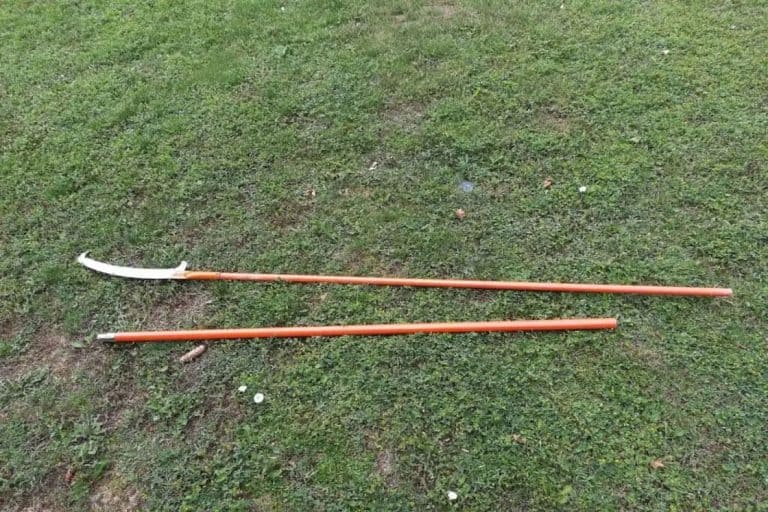If your upcoming plans include cozying up in front of a fireplace or wood-burning stove, firewood stacking should be on your mind. If you’ve ever wondered why firewood needs to be stacked, how dry firewood needs to be, or what the best firewood stacking methods are, you’ve come to the right place.
Contents
Why Does Firewood Need to Be Stacked?
Firewood needs to be stacked for two reasons:
![How to Stack Firewood [With and Without Racks] 1 How to Stack Firewood [With and Without Racks] Learning how to stack firewood](https://brandisawyer.com/wp-content/uploads/2022/01/how-to-stack-firewood-01.jpg)
- To make it easily accessible. A large, loose pile of wood takes up a lot of space and is difficult to access. Stacking wood so that it stays stable and neatly piled is the obvious solution.
- To get and stay dry. Burning wet firewood is less efficient, emits less heat, and produces more smoke than burning dry firewood. Excess smoke can affect the air quality in your home and cause a dangerous build-up of creosote in your flue.
Most people elect to cut their firewood with a chainsaw. Firewood requires a stronger chainsaw, while you can use a smaller chainsaw for lighter wood.
Once you get into a grove, its relatively easy to cut a large amount of firewood fast. However, make sure you observe all necessary safety precautions as you cut your firewood.
Drying and Storing Firewood in Stacks
It can take between six months and two years for wet wood to transform into firewood. Even seasoned wood needs to stay dry to burn well. Properly stacking wood encourages the drying process, ensuring you’ll have the fuel you need. Here are some general tips:
- Avoid direct rainfall. While you don’t need to store your firewood inside, try to choose a pace for your firewood stack with some protection from the elements. This could be under an overhang or carport, or under the shelter of trees.
- Seek sun. Sun not only helps the wood get and stay dry, it heats up the air around the wood, helping more moisture escape.
- Find level ground. Keeping firewood stacked can be challenging — make sure the ground beneath you isn’t making it harder. Dry, hard ground is a perfect base for a firewood stack.
- Lift off the ground, if possible. Protect your firewood from standing water and ground moisture by stacking it on cinder blocks or tarp-covered plywood.
- Stack loosely. Air must be allowed to circulate around the wood.
- Most moisture escapes through the end grain. When seasoning wood, it is especially important to prioritize air flow around the end grains of each piece. If you are stacking wood that has already been seasoned or kiln-dried, exposing the end grain is less important.
- Stay away from your house. Make sure not to stack firewood so that it is touching an exterior wall of your home. Leave at least six inches of space between a stack of firewood and your siding to avoid inadvertently introducing insects or funguses to your home.
![How to Stack Firewood [With and Without Racks] 2 How to Stack Firewood [With and Without Racks] Preparing how to stack firewood outside](https://brandisawyer.com/wp-content/uploads/2022/01/how-to-stack-firewood-03.jpg)
How to Stack Firewood
Now that you know some general information about how to stack and store firewood, let’s get into specific techniques you can use.
1. Use Trees
For short-term, temporary, or quick storage of firewood, you can stack it between two trees. However, the rubbing and pressure of the firewood can be hard on the bark of the trees over time. You may want to look for a more permanent long-term stacking method after a few years.
- Evaluate your property. Storing firewood is best done on higher ground that has good drainage. An area that gets a lot of sunlight will help wet wood dry.
- Choose your trees. Look for trees that are between 12 and 16 feet apart. The trunk of each tree should be more or less perpendicular to the ground.
- Build the foundation layer. Lay firewood on the ground between the two trees, with the end grains facing out. The row of firewood should be snug, but not overly compressed.
- Stack loosely. Lay firewood on top of the foundation layer. Try to turn each piece so that it presents a flat surface for the next layer. Stack wood so that it is well-balanced and secure, but air can easily flow around it.
- Don’t stack too high. Protect yourself from injury by keeping firewood stacks below shoulder height. Not only can transferring weight above your head be dangerous for your back, but you also risk a head injury if the wood stack topples.
2. Use a Wood Rack
Wood racks are purpose-built to support firewood and can last for a long time, so they make sense if you’re dedicated to your fireplace, wood-burning stove, or firepit.
- Fireplace and stove retailers are good resources if you are looking to purchase a wood rack. You can also find wood racks at big box home improvement stores and online. Smaller wood racks tend to be readily available on community marketplace or exchange sites.
- Look for a wood rack made from moisture-resistant material like metal or plastic. If you’re planning to store the wood on a porch or deck, make sure that the structure can support the extra weight of the rack and a full load of firewood.
- Another easy source for wood racks is to make your own. You can either use one of the many DIY guides available or purchase a specialty firewood rack kit.
Even if you’re not particularly handy, DIY firewood storage racks are a relatively fun and easy project. All you need is six pieces of 2×4 lumber – easily sourced at any lumber yard. The 2x4s slot into the brackets, forming a strong and stable rack for your firewood.
The best part about this project is that if you decide you need more space to stack firewood, that’s no problem – you can vary the length of the lumber to suit your individual wood storage needs.
![How to Stack Firewood [With and Without Racks] 3 How to Stack Firewood [With and Without Racks] How to stack firewood and burn outside](https://brandisawyer.com/wp-content/uploads/2022/01/how-to-stack-firewood-02.jpg)
3. Build an End Pillar From Firewood
If you don’t have conveniently placed trees and aren’t prepared to build a wood rack, you can use firewood to make your own end pillars.
- Choose your location carefully. You’re looking for flat, even dry ground. Some protection from the elements due to nearby buildings or trees is great, and daily sunshine is important to keep your wood stack from rotting.
- Select your pieces. The end pillars will be supporting the whole stack, so they must be extremely stable. Choosing the most evenly proportioned pieces of wood will make it easier to build the pillar structure than can support your firewood all year.
- Set the first layer. Choose three very flat, very even pieces of wood and place them side by side in a line on the ground.
- Stack the second layer. Choose another three pieces of wood that are similar in thickness. Lay them across the first layer of wood, so the end grains face opposite directions.
- Continue to stack. Build up the pillar by stacking wood first one way and then the other. Frequently check your progress, making sure the pillar is supporting its own weight and rising straight up from the ground.
- Stop at shoulder height. Hopefully, your pillar will stay strong. If something should happen and it collapses, you don’t want firewood raining down on your head.
- Make a mate. Use the same technique to build another pillar. The second pillar should be in line with the first, around ten feet away. Stack the firewood on its side between the two pillars.
4. Make a Holzhaus From Firewood
The holzhaus method of stacking firewood must be built in a sunny location, where lots of warm air will circulate around the inside of this silo-shaped firewood stack. It’s a perfect method for seasoning because it neatly stores and protects a lot of wood.
- Use split firewood to make a ring on the ground. The bark should face out, and the split sides of the wood face the center of the circle.
- Stack wood on top of the ring. The result should be an exterior wall of wood that slopes slightly downward, toward the center of the circle. Take care to orient the wood so that the bark-covered side faces skyward, when possible.
- Fill the center. In the center of the exterior wall, stand firewood on end. Stack the firewood vertically until it rises above the wall, forming a cone shape.
- Make a roof. Use pieces of firewood with lots of bark to form a protective covering. The roof should be at its highest in the center of the holzhaus, sloping down as it moves toward the exterior wall.
- Watch the weather. If you’ve constructed your holzhaus properly, it should handle rain well. What doesn’t roll off the roof is directed towards the ground by the sloping exterior wall.
How Dry Should Firewood Be?
Using a moisture meter, your firewood should have a moisture content under 20% to be considered dry and ready to burn.
The moisture content of a piece of firewood can be easily checked using a moisture meter. Here are a few guidelines to judge how dry your wood is:
- Living trees have a moisture content of around 60%. After the tree is felled, the moisture content will drop over time, provided the wood is properly stacked and stored.
- Wood with a moisture content above 20% is considered ‘wet’ or ‘unseasoned’.
- Wood between 12% – 20% is considered ‘seasoned’, ‘dry’, or ‘ready to burn’.
- Wood below 12% moisture content is very dry. Watch it carefully as it may burn aggressively.
Conclusion
Wood must be dried appropriately before it can burn. Stacking firewood assists with the drying process and keeps wood tidy. Four methods for stacking firewood are; using trees to support the wood stack, buying or making a wood rack, making end supports from stacked firewood, and building a firewood holzhaus.




![Best Portable Band Saw in 2023 – [Compared & Reviewed] 8 Best Portable Band Saw in 2023 – [Compared & Reviewed] Best Portable Band Saw](https://brandisawyer.com/wp-content/uploads/2020/06/best-portable-band-saw-768x768.jpg)
